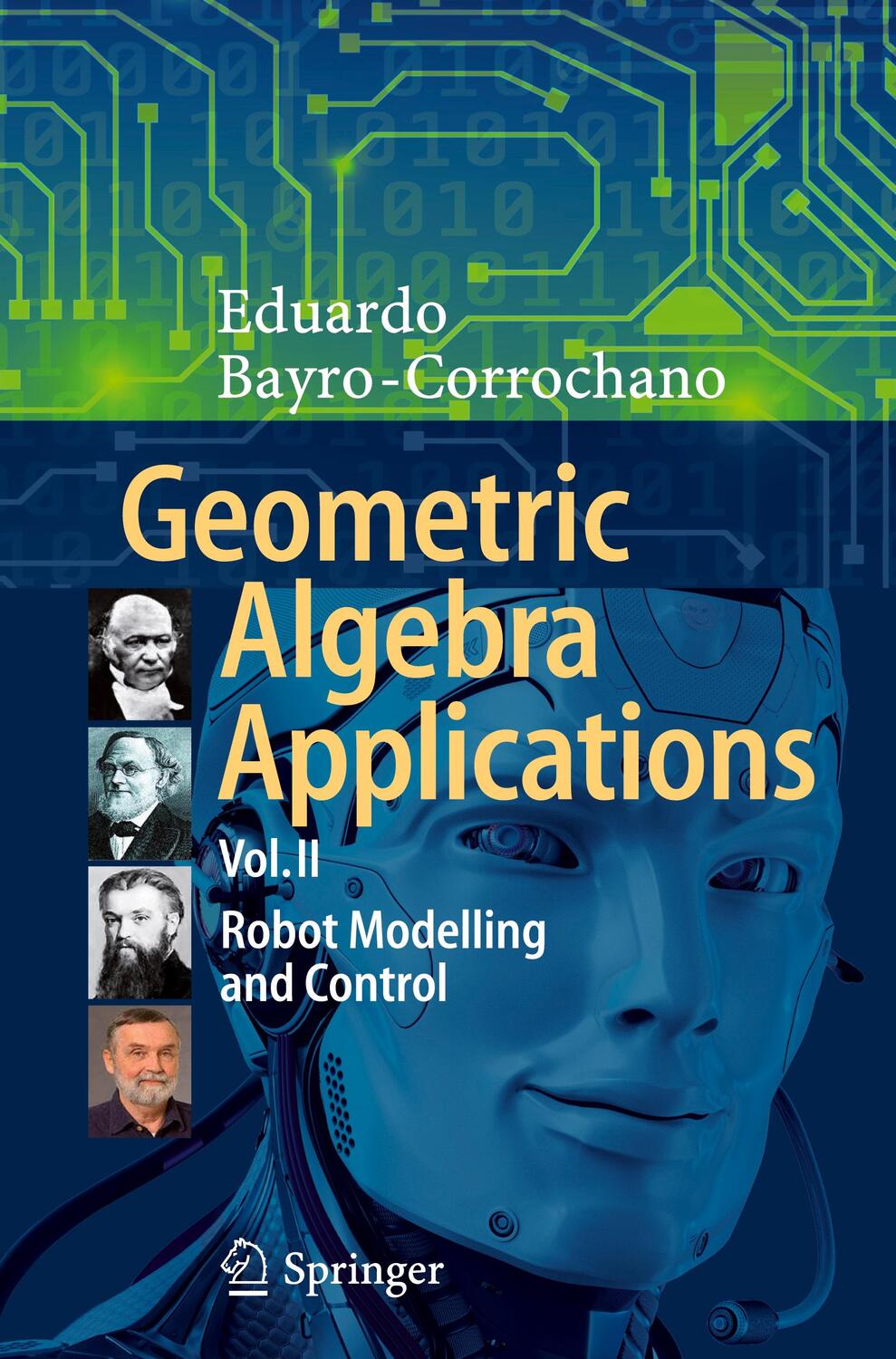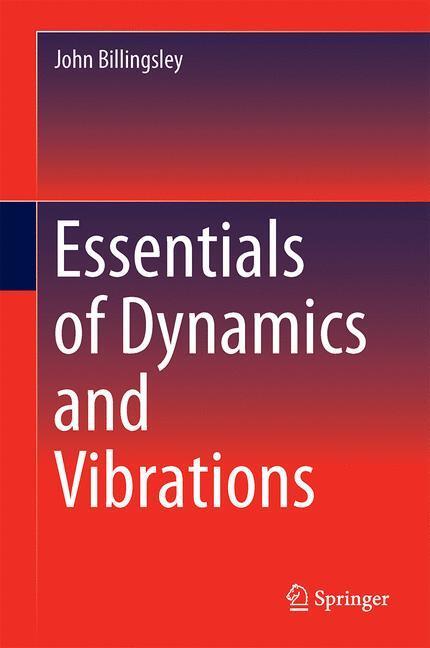192,59 €*
Versandkostenfrei per Post / DHL
Aktuell nicht verfügbar
general domain of robotics and associated fields using Clifford or geometric alge-
bra. By addressing a wide spectrum of problems in a common language, it offers
both fresh insights and new solutions that are useful to scientists and engineers
working in areas related with robotics.
It introduces non-specialists to Clifford and geometric algebra, and provides ex-
amples to help readers learn how to compute using geometric entities and geomet-
ric formulations. It also includes an in-depth study of applications of Lie group
theory, Lie algebra, spinors and versors and the algebra of incidence using the
universal geometric algebra generated by reciprocal null cones.
Featuring a detailed study of kinematics, differential kinematics and dynamics
using geometric algebra, the book also develops Euler Lagrange and Hamiltoni-
ans equations for dynamics using conformal geometric algebra, and the recursive
Newton-Euler using screw theory in the motor algebra framework. Further, it
comprehensively explores robot modeling and nonlinear controllers, and discusses
several applications in computer vision, graphics, neurocomputing, quantum com-
puting, robotics and control engineering using the geometric algebra framework.
The book also includes over 200 exercises and tips for the development of future
computer software packages for extensive calculations in geometric algebra, and a
entire section focusing on how to write the subroutines in C++, Matlab and Maple
to carry out efficient geometric computations in the geometric algebra framework.
Lastly, it shows how program code can be optimized for real-time computations.
An essential resource for applied physicists, computer scientists, AI researchers,
roboticists and mechanical and electrical engineers, the book clarifies and demon-
strates the importance of geometric computing for building autonomous systems
to advance cognitive systems research.
general domain of robotics and associated fields using Clifford or geometric alge-
bra. By addressing a wide spectrum of problems in a common language, it offers
both fresh insights and new solutions that are useful to scientists and engineers
working in areas related with robotics.
It introduces non-specialists to Clifford and geometric algebra, and provides ex-
amples to help readers learn how to compute using geometric entities and geomet-
ric formulations. It also includes an in-depth study of applications of Lie group
theory, Lie algebra, spinors and versors and the algebra of incidence using the
universal geometric algebra generated by reciprocal null cones.
Featuring a detailed study of kinematics, differential kinematics and dynamics
using geometric algebra, the book also develops Euler Lagrange and Hamiltoni-
ans equations for dynamics using conformal geometric algebra, and the recursive
Newton-Euler using screw theory in the motor algebra framework. Further, it
comprehensively explores robot modeling and nonlinear controllers, and discusses
several applications in computer vision, graphics, neurocomputing, quantum com-
puting, robotics and control engineering using the geometric algebra framework.
The book also includes over 200 exercises and tips for the development of future
computer software packages for extensive calculations in geometric algebra, and a
entire section focusing on how to write the subroutines in C++, Matlab and Maple
to carry out efficient geometric computations in the geometric algebra framework.
Lastly, it shows how program code can be optimized for real-time computations.
An essential resource for applied physicists, computer scientists, AI researchers,
roboticists and mechanical and electrical engineers, the book clarifies and demon-
strates the importance of geometric computing for building autonomous systems
to advance cognitive systems research.
Offers in a compact and complete way the theory and methods to apply Geometric Algebra to Robotics
Introduces the basics of geometric algebra to specialists and non- specialists in a gentle and comprehensive manner using examples and abundant figures and simulation results
Step by step using examples encourages readers to learn how to model, design algorithms for modern applications in the area of robotics
| Erscheinungsjahr: | 2020 |
|---|---|
| Fachbereich: | Arithmetik & Algebra |
| Genre: | Mathematik |
| Rubrik: | Naturwissenschaften & Technik |
| Medium: | Buch |
| Seiten: | 632 |
| Inhalt: |
xxix
600 S. 89 s/w Illustr. 167 farbige Illustr. 600 p. 256 illus. 167 illus. in color. |
| ISBN-13: | 9783030349769 |
| ISBN-10: | 3030349764 |
| Sprache: | Englisch |
| Ausstattung / Beilage: | HC runder Rücken kaschiert |
| Einband: | Gebunden |
| Autor: | Bayro-Corrochano, Eduardo |
| Auflage: | 1st ed. 2020 |
| Hersteller: |
Springer International Publishing
Springer International Publishing AG |
| Maße: | 241 x 160 x 40 mm |
| Von/Mit: | Eduardo Bayro-Corrochano |
| Erscheinungsdatum: | 20.06.2020 |
| Gewicht: | 1,103 kg |
Offers in a compact and complete way the theory and methods to apply Geometric Algebra to Robotics
Introduces the basics of geometric algebra to specialists and non- specialists in a gentle and comprehensive manner using examples and abundant figures and simulation results
Step by step using examples encourages readers to learn how to model, design algorithms for modern applications in the area of robotics
| Erscheinungsjahr: | 2020 |
|---|---|
| Fachbereich: | Arithmetik & Algebra |
| Genre: | Mathematik |
| Rubrik: | Naturwissenschaften & Technik |
| Medium: | Buch |
| Seiten: | 632 |
| Inhalt: |
xxix
600 S. 89 s/w Illustr. 167 farbige Illustr. 600 p. 256 illus. 167 illus. in color. |
| ISBN-13: | 9783030349769 |
| ISBN-10: | 3030349764 |
| Sprache: | Englisch |
| Ausstattung / Beilage: | HC runder Rücken kaschiert |
| Einband: | Gebunden |
| Autor: | Bayro-Corrochano, Eduardo |
| Auflage: | 1st ed. 2020 |
| Hersteller: |
Springer International Publishing
Springer International Publishing AG |
| Maße: | 241 x 160 x 40 mm |
| Von/Mit: | Eduardo Bayro-Corrochano |
| Erscheinungsdatum: | 20.06.2020 |
| Gewicht: | 1,103 kg |












